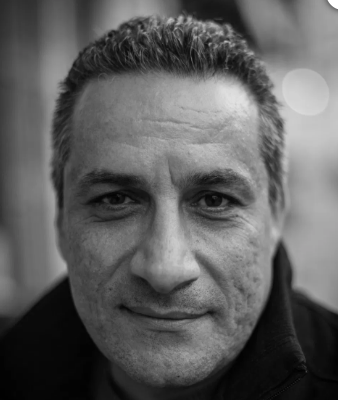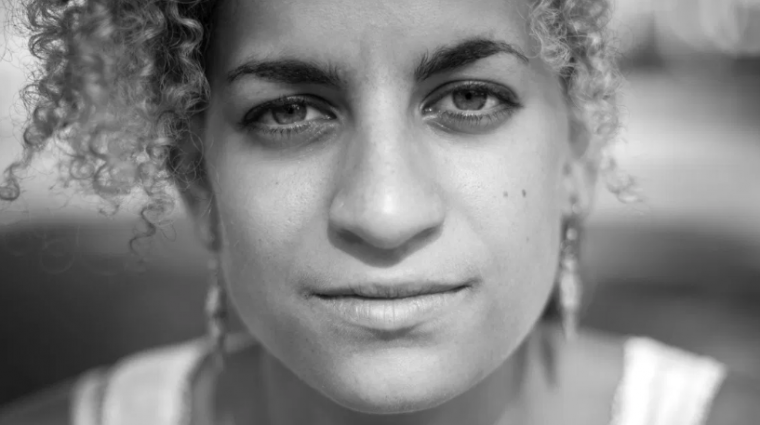The human face of conflict in Israel and Palestine
Following the move of the US embassy to Jerusalem last week, clashes broke out between Israelis and Palestinians resulting in the death of some 60 people, including 13 children.
Both sides of this battle are entrenched in their own histories, cultures and hostilities. Their governing bodies do not and will not understand each other as long as they insist that they will not compromise on the values they hold. Behind these competing ideologies, however – and often lost in mainstream media – are the lives of real people.

Last week, as the attacks took place, the UK parliament was host to an effort from the church to bring the plight of individuals to the attention of government. It began with a week-long photographic exhibition depicting the portraits and stories of 50 individuals who live on both sides of the Holy Land conflict. A meeting followed this between Bishop Christopher Chessun (Church of England bishop of Southwark), Bishop Declan Lang (Catholic bishop of Clifton), and MPs to discuss the rising tensions in Israel and Palestine.

The 50 Faces Project and exhibition aimed to highlight the human face of conflict, with stories from individuals living under occupation. It captures the images of Christians, Jews, Muslims and others who all claim the land in which they live to be holy. Many of the images are accompanied by powerful testimonies from over 50 years of living with and in the midst of conflict. The aim of the project was to create 'face to face' meetings with the individuals affected by this international tension.
Sami, the first face of the exhibition, was born in Jerusalem on the first day of the war in 1967. He has lived in Jerusalem all his life, hearing that peace was soon to come. He said that his mother buried family members on the day that he was born. Nobody congratulated her on the birth of her son. He has since had his own children, and has also promised peace, with little faith in its arrival.
Frima is a 23-year-old modern orthodox Jewish woman. Although she practised her faith and could therefore have abstained from military service, she chose voluntarily to join the Israeli Defence Force at the age of 18. Frima was under the impression that she would be 'the good soldier in the bad situation', but instead found that the orders that she was following clashed with the morals that she was raised on.

Chaim lives in the Israeli settlement of Efrat. Born in Switzerland, Chaim chose to move back to Israel when he married in order to re-engage with his religious ancestry. 'The place itself is surrounded by biblical events', he says, all of which he takes immense pride in demonstrating his proximity to. His family has lived for over 10 generations in Europe, but it was upon his return to Israel, and specifically the areas near Bethlehem, that Chaim was able to feel, touch and make history. 'It is where we feel we belong,' he says.

The exhibition holds many moving testimonies such as these, aiming to bring the individual back into the image of conflict that the world receives. The photographer, Marcin Mazur, speaks about this focus: 'I wanted the exhibition to go up with no names, places, or ages; just faces. You hear and see their struggle before you make a judgment.'
All 50 images, including parents who have lost children, students, great-grandmothers, settlers, religious leaders and more can be found here. And here too, you can find some of their testimonies, fears and hopes for the future. 'These pictures remind us,' says Mazur, and in the light of the latest fatalities, 'that each of these reports and figures are made up of hundreds of faces that experience this life. It is one so removed from us in the UK, but is something we see daily in the news.'
The faces of a country are marked with its history, its diversity, its joy and its suffering. Every face tells us of a story behind a number that we read. While each bomb shocks the world, until we see the faces, learn the names and hear the testimonies of those affected in their everyday lives, we will not see change.
This exhibition forces the audience into the shoes of someone living this life. Their stories can change the notion of 'other' into one of 'another victim'. Until we, or the world, see these people eye-to-eye, we will not see the true toll of these struggles.
Nina Mattiello Azadeh studied music and philosophy and was a Faith in Politics media intern in 2016. She has a keen interest in interfaith relations, social action and is a classical ballet dancer. Follow her on Twitter @Ninamataz











